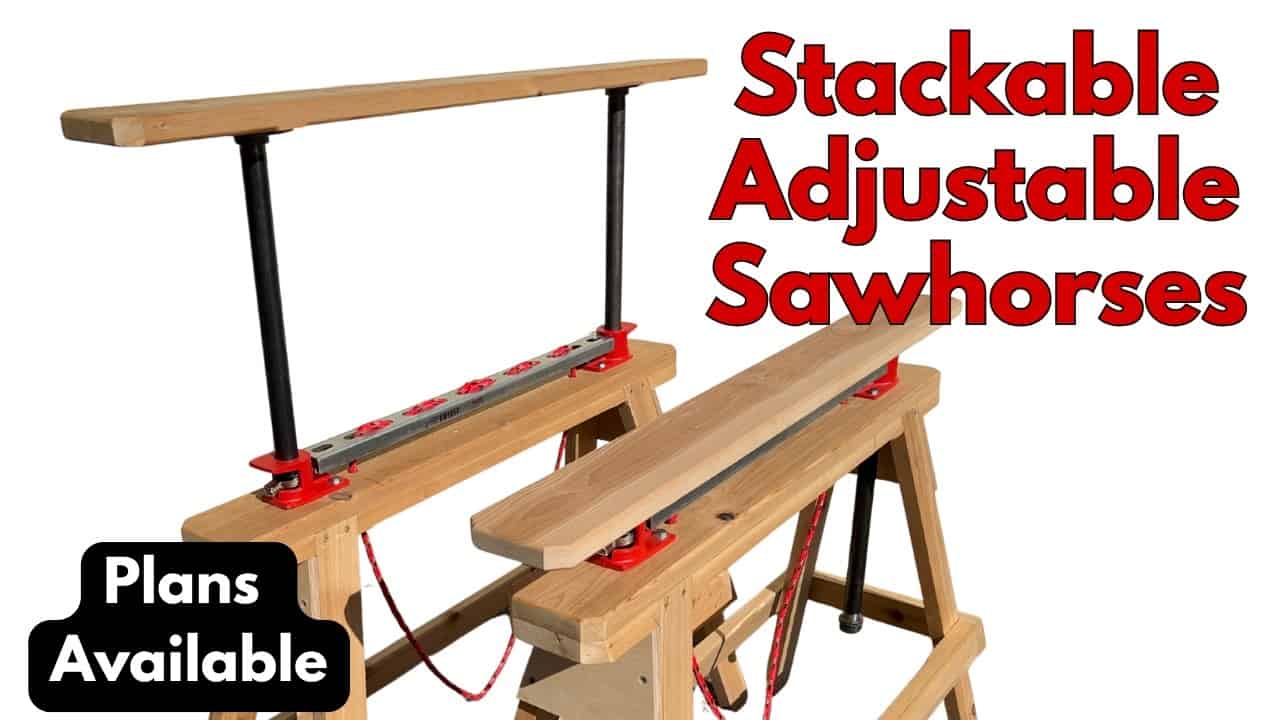This project was built and designed by Brett from Brett’s Basement Woodshop.
These adjustable and stackable sawhorses offer a compact, versatile solution for tight workshop spaces and low ceilings, combining simple joinery with an easy-to-use height mechanism.
Watch the full video and subscribe to Brett’s Basement Woodshop:
Design
The sawhorse design prioritizes versatility and stability, using angled legs and multi-piece top plates to create a sturdy platform that nests neatly when stacked.
The blend of exposed hardware and clean glued surfaces keeps the aesthetic simple while making the piece practical for a variety of shop tasks.
Lumber Prep and Layout
Brett favors cedar decking for its light weight and thickness, trimming rounded edges and ripping boards to yield square, strong legs and plates that fit the design language.
Consistent layout practices—labeling parts, using templates, and cutting parts for both sawhorses together—help keep the build accurate and reduce repeated tool setups.
Joinery and Assembly
The legs are notched into a top rail to get a flush fit, and compound angle cuts set the front-to-back and side-to-side splay for a predictable stance under load.
Assembly combines glue and screws with pilot holes and careful screw placement so the structure is secure without creating interference for later hardware installation.
Braces, Gussets and Stacking
Beveled braces are cut to match the leg angles, and end braces lock the legs to reduce flex before final fastening, which produces a clean, strong frame that resists racking.
Plywood gussets at the leg-to-rail junction add diagonal support and help the sawhorses nest together smoothly, preserving function when the units are stacked for storage.
Height Adjustment Mechanism
Adjustability is achieved with pipe-clamp hardware mounted through the top rail and captured with floor flanges and end caps, allowing the top to slide up and down on the pipe stanchions.
An unistrut channel and cord secure the clamp assembly and provide a simple, accessible way to change working height for both heavy and fine work without elaborate hardware.
Tips and Lessons Learned
Brett emphasizes the value of templates and gang-cutting to keep repeated parts consistent, and recommends drilling pilot holes to avoid splitting soft decking material when driving screws.
Labeling left/right and top/bottom early prevents costly mistakes with compound cuts, and checking clamp and hardware locations before final screwing helps avoid conflicts during the build.
Why This Build Matters
These sawhorses are a practical shop upgrade because they combine stackable storage, multiple working heights, and solid construction without a complex parts list.
The design adapts to other lumber choices and can be extended with interchangeable tops or alternate clamping methods to match specific shop workflows.
Get Brett’s plans here: https://www.brettsbasementwoodshop.com/plans/p/adjustable-sawhorse-plans.
